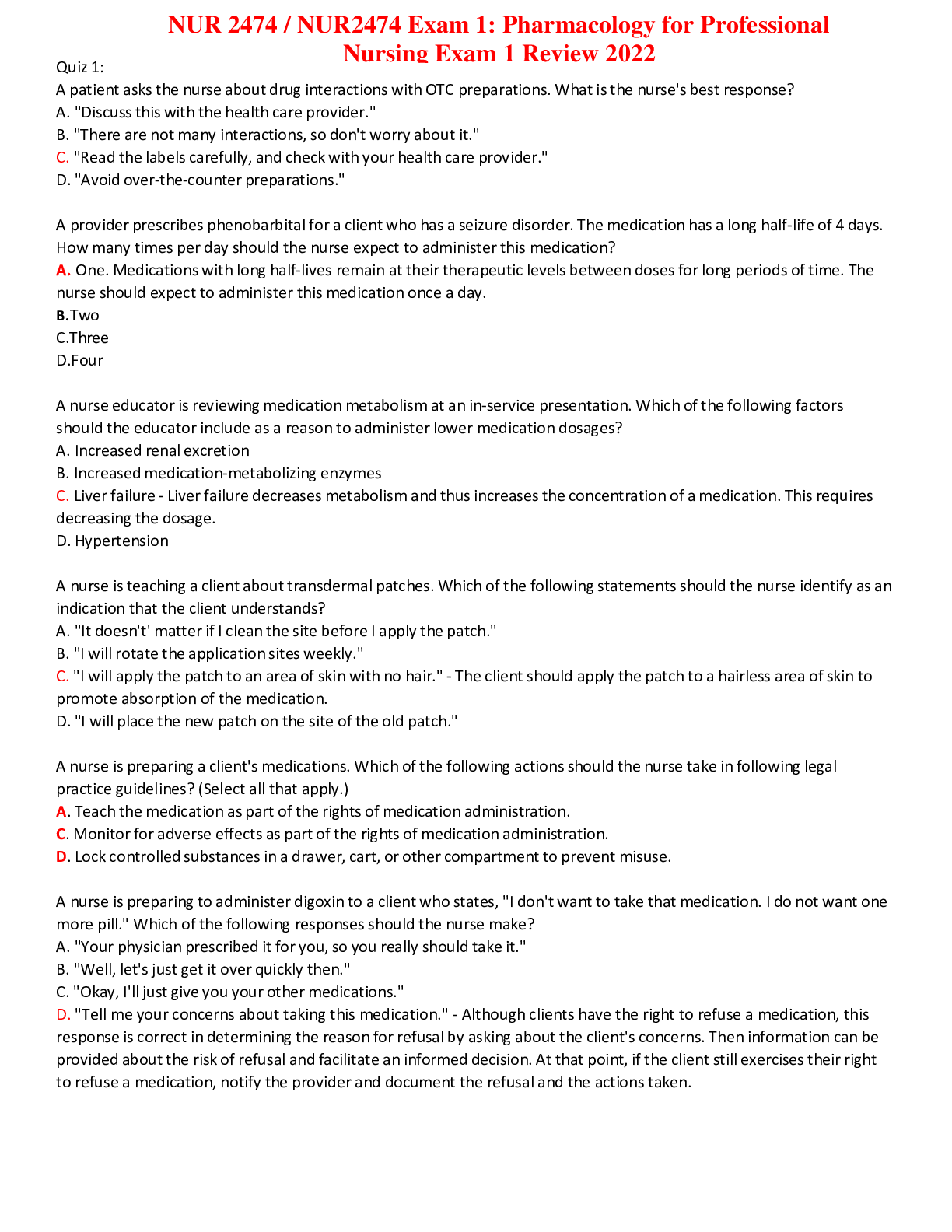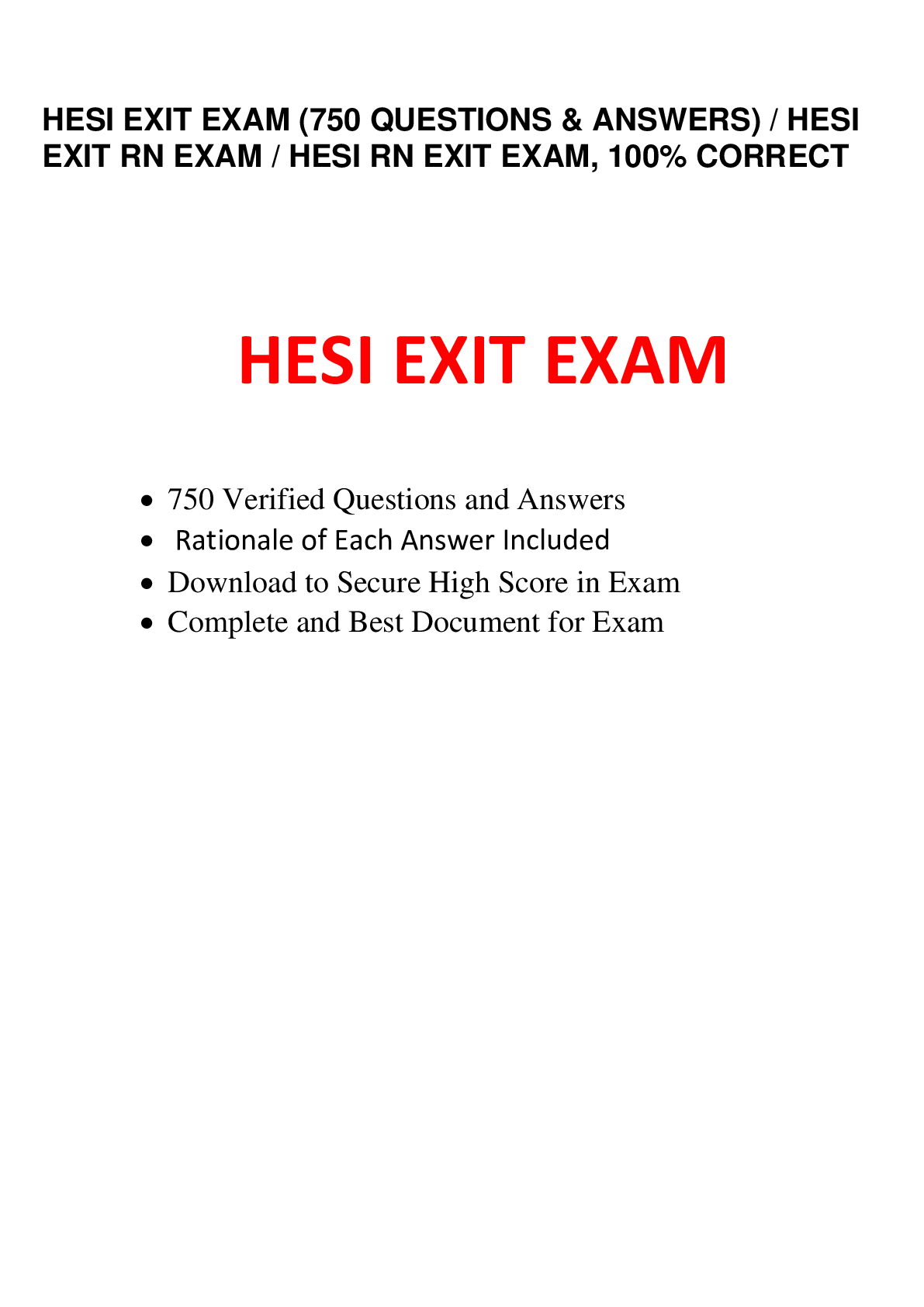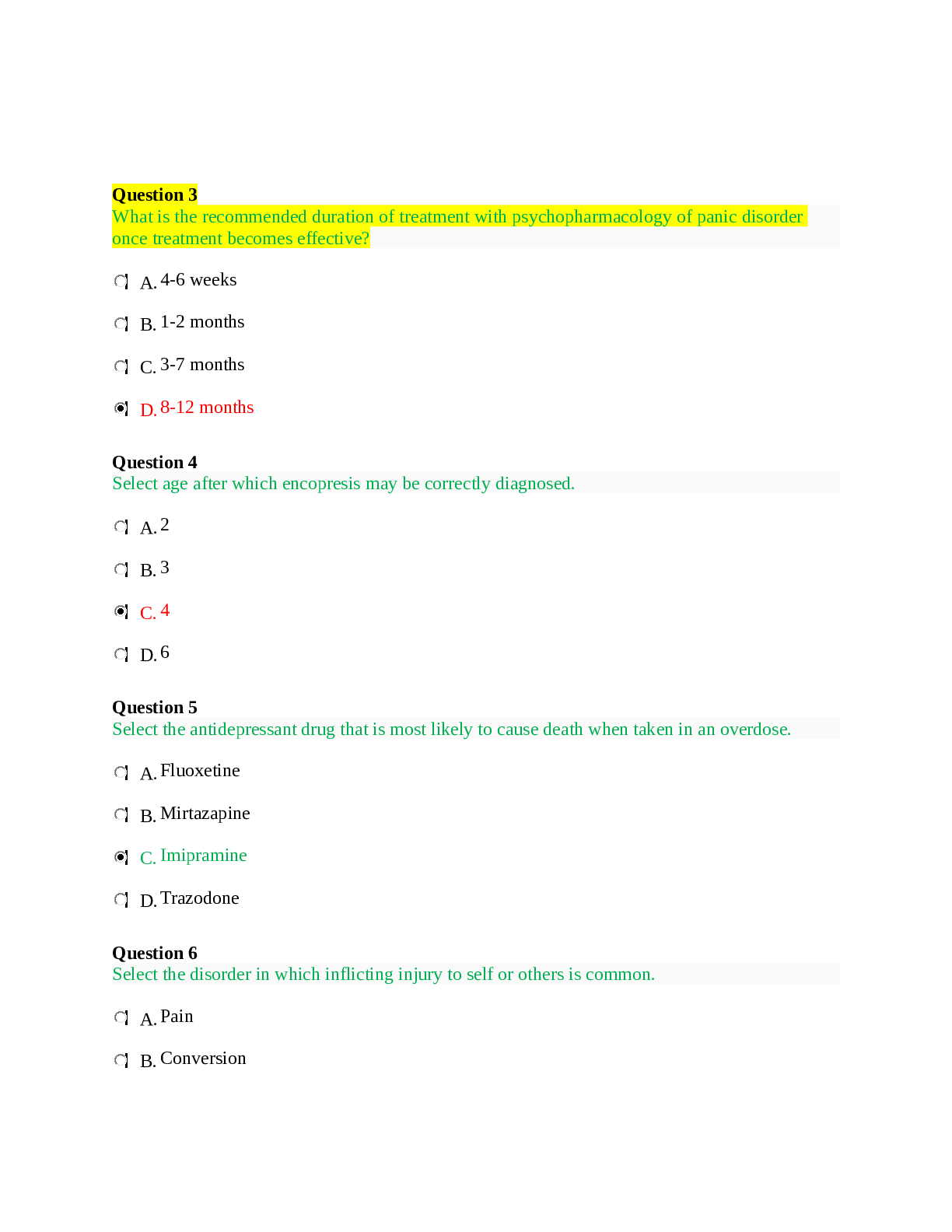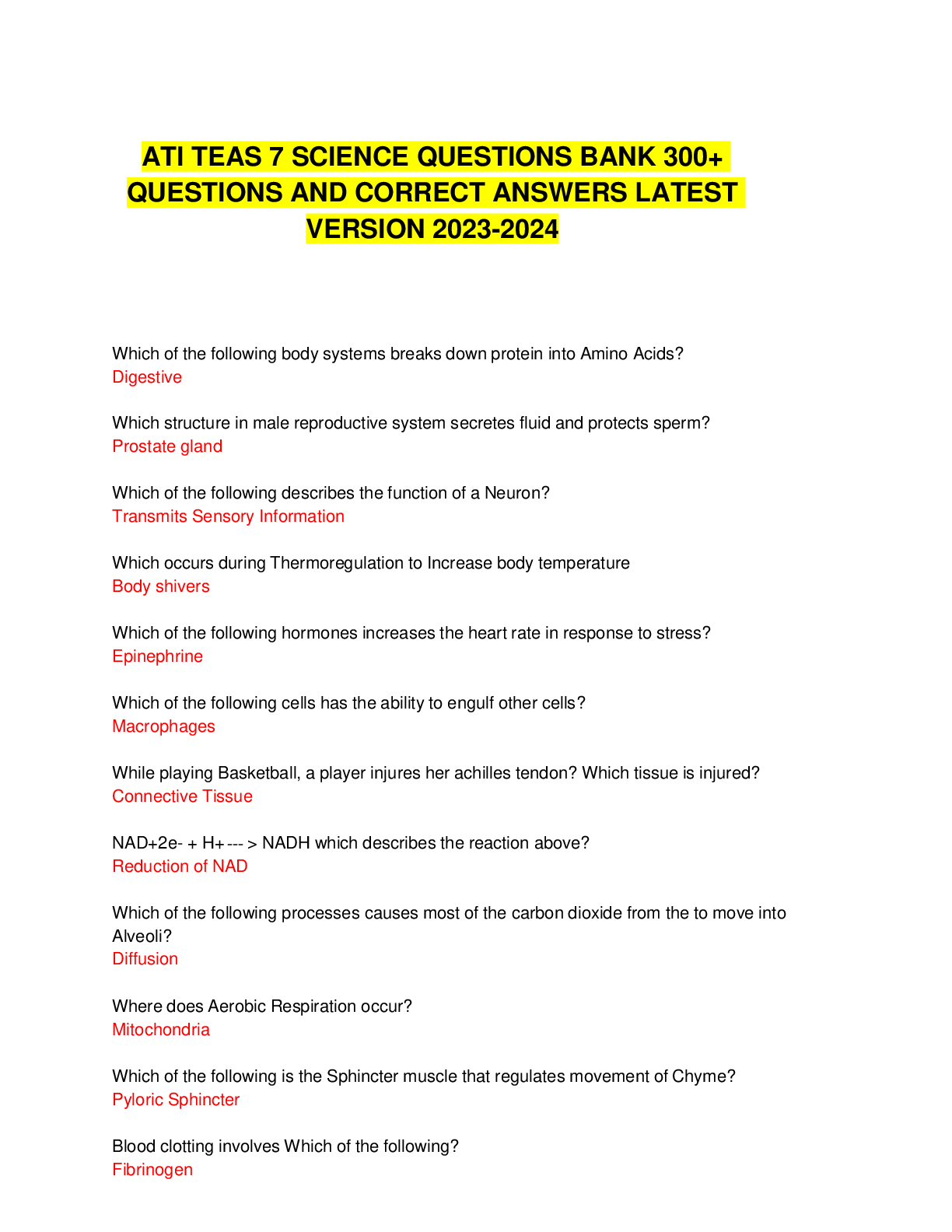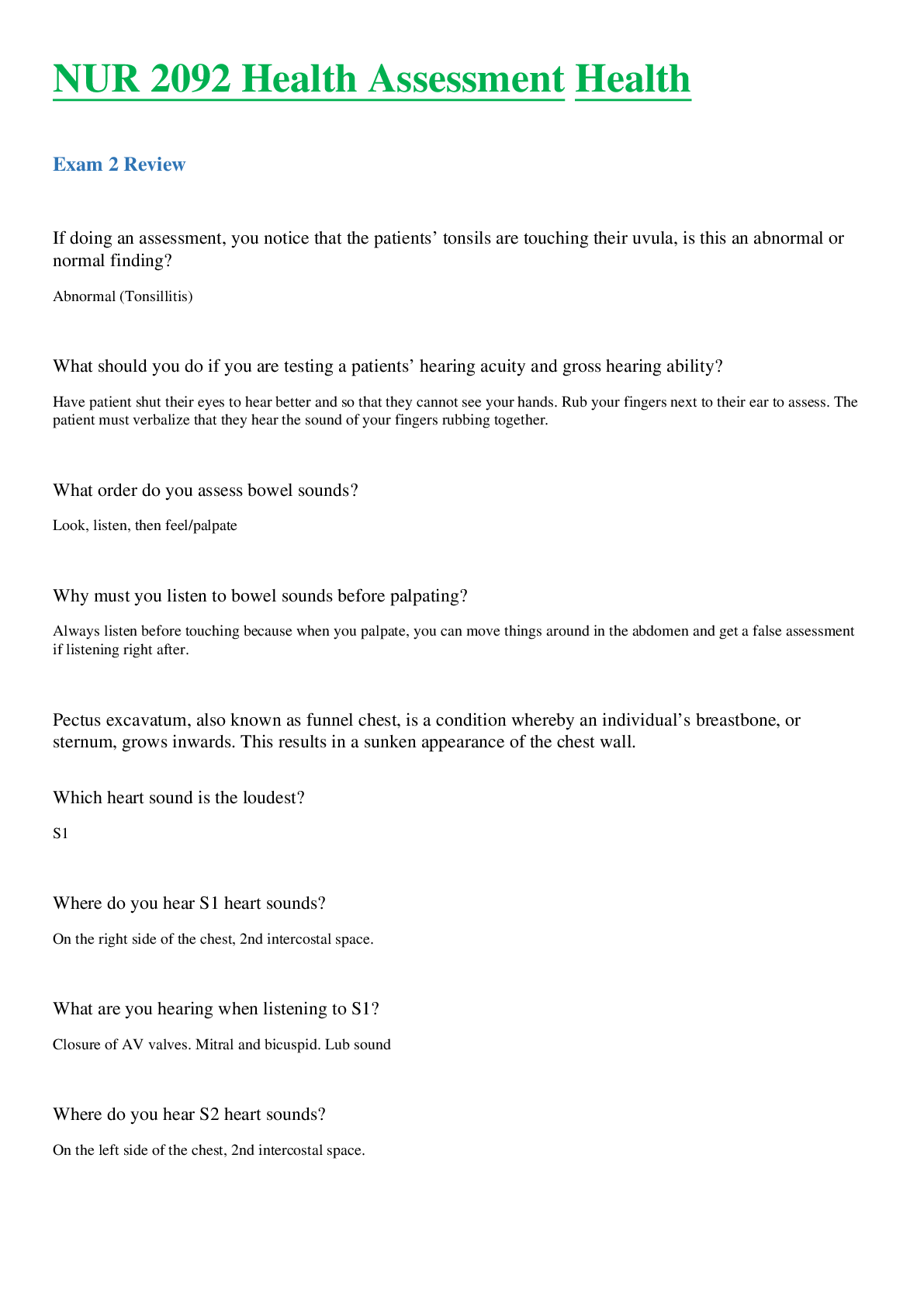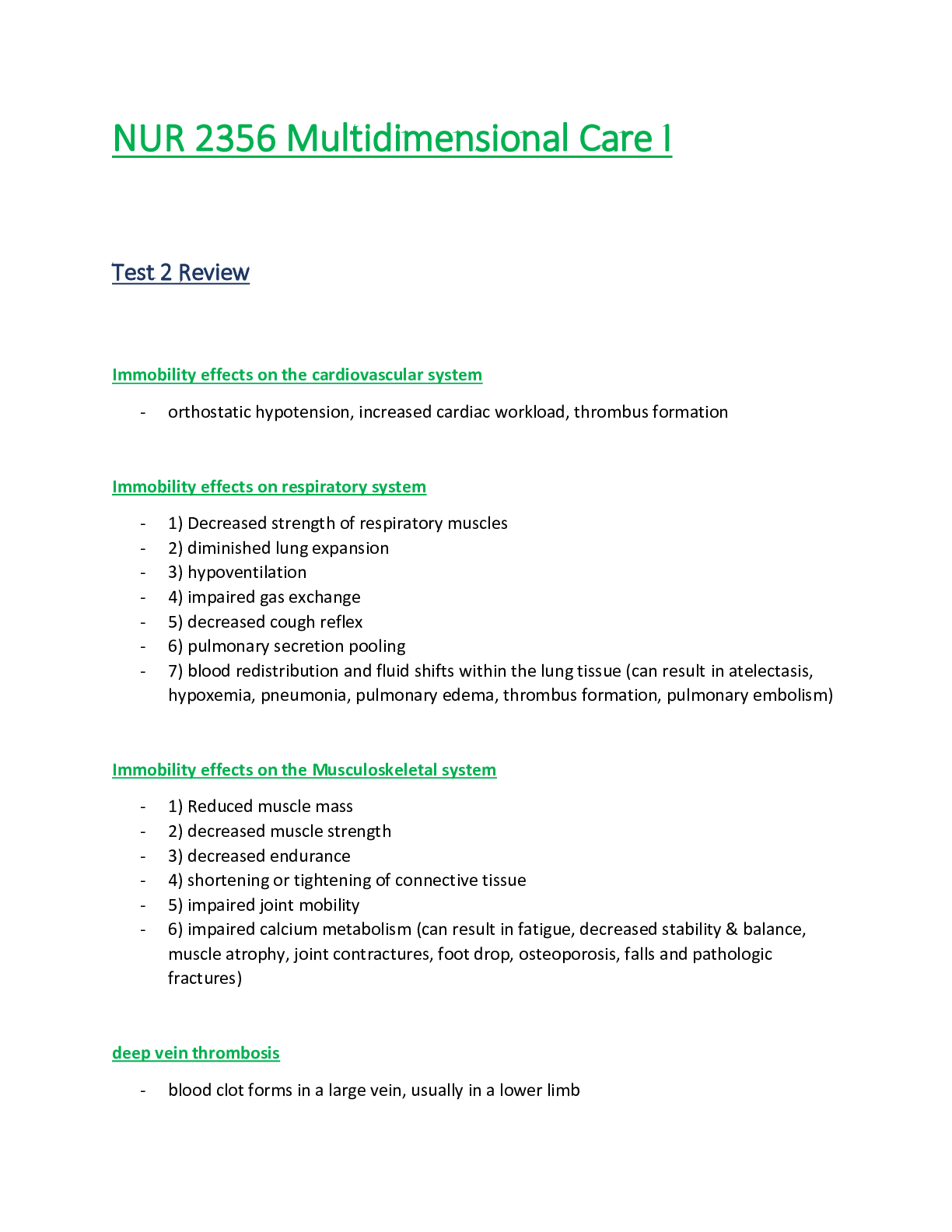*NURSING > EXAM REVIEW > Praxis Questions and Answers Study Guide (All)
Praxis Questions and Answers Study Guide
Document Content and Description Below
Praxis Questions and Answers Study Guide 1. Question: When one is choosing an objective for intervention, which of the following is the most important consideration? • A. A therapist’s ability ... to model the objective • B. The degree of structure needed to meet the objective • C. The teachability of the objective • D. The rewards that come from meeting the objective 2 Question: Robert is a 6-year-old boy who has a severe hearing impairment. Which of the following most likely characterizes his speech? • A. Omission of final consonants • B. Substitution of voiceless for voiced consonants • C. Hyponasality associated with vowel production • D. Faster rate of speaking than normal hearing speakers 3. The terms “tense” and “lax” are characteristic of which of the following acoustic aspects of vowel speech production? • A. Frequency • B. Amplitude • C. Duration • D. Stress 4. Question: A speech clinician evaluates a student for an expressive language disorder. Test results reveal difficulties with vocabulary use. With which aspect of language does the student demonstrate difficulties? • A. Content Correct Answer: C Option (C) is correct. Duration is the measure of time during which speech sounds are sustained. Correct Answer: A Option (A) is correct. Both initial and final consonant deletions are made by children with severe hearing impairments; however, final consonant deletions are likely to be far more prevalent. Correct Answer: C Option (C) is correct. According to experts in the fields of general education and special education, the ease with which a student can learn a skill should be considered in choosing objectives for intervention. The skills that are more teachable are those that are as follows: easily demonstrated or pictured; taught through stimulus materials that are easily accessed and organized; and used frequently in naturally occurring, everyday activities in which the student is engaged. • B. Form • C. Use • D. Grammar 5. Answer the question by clicking on the correct response. Question: A speech clinician evaluates a student for an expressive language disorder. Test results reveal difficulties with the use of auxiliary verbs, pronouns, and future-tense verbs. With which aspect of language does the student demonstrate difficulties? • A. Content • B. Form • C. Use • D. Pragmatics 6. A student says “me turn” instead of “my turn.” The student has made an expressive language error in using which of the following parts of speech? • A. Quantifiers • B. Conjunctions • C. Pronouns • D. Adverbs 7. Which of the following is true about language sample collection? • A. The language sample should be based on rote skills. • B. The child should only interact with one person when producing the sample. • C. It is sufficient to collect only one language sample a year. • D. The contexts and activities used to elicit the language sample should be varied. Correct Answer: D Option (D) is correct. There are several aspects of collecting a language sample that are especially important for assessing language disorders. These include varying the context and activities used to elicit the sample. By doing this, the clinician can assess Correct Answer: C Option (C) is correct. A pronoun is a word that takes the place of a noun. Major categories of pronouns include personal, demonstrative, indefinite, relative, possessive, and interrogative. “My” is an example of a possessive pronoun. Correct Answer: B Option (B) is correct. Form includes primary syntax, morphology, and phonology. Auxiliary verbs, pronouns, and future-tense verbs are components of syntax. Correct Answer: A Option (A) is correct. Content is essentially made up of the semantic components of language, knowledge of vocabulary, and knowledge about objects and events. 8. Which of the following is an appropriate background question for a clinician to ask a parent about a child’s stuttering? • A. Does your child appear to understand you? • B. Does your child say sounds correctly? • C. Does your child avoid certain words? • D. Does your child’s voice change during the day? 9. Which of the following is a component of the oral-facial examination? • A. Identifying sound errors • B. Language sampling • C. Determining mean length of utterance • D. Assessing diadokokinesis 10. By what age does a typically developing child have a vocabulary of 50 words? • A. From 8 to 12 months • B. From 12 to 18 months • C. From 18 to 24 months • D. From 24 to 30 months 11. Which of the following refers to the rate of vibration of a sound? • A. Frequency • B. Amplitude different aspects of language that serve as the foundation for and predictor of later reading skills. Correct Answer: D Option (D) is correct. Diadokokinesis is us [Show More]
Last updated: 3 years ago
Preview 1 out of 40 pages

Buy this document to get the full access instantly
Instant Download Access after purchase
Buy NowInstant download
We Accept:

Reviews( 0 )
$15.00
Can't find what you want? Try our AI powered Search
Document information
Connected school, study & course
About the document
Uploaded On
Jul 24, 2022
Number of pages
40
Written in
All
Additional information
This document has been written for:
Uploaded
Jul 24, 2022
Downloads
0
Views
165

